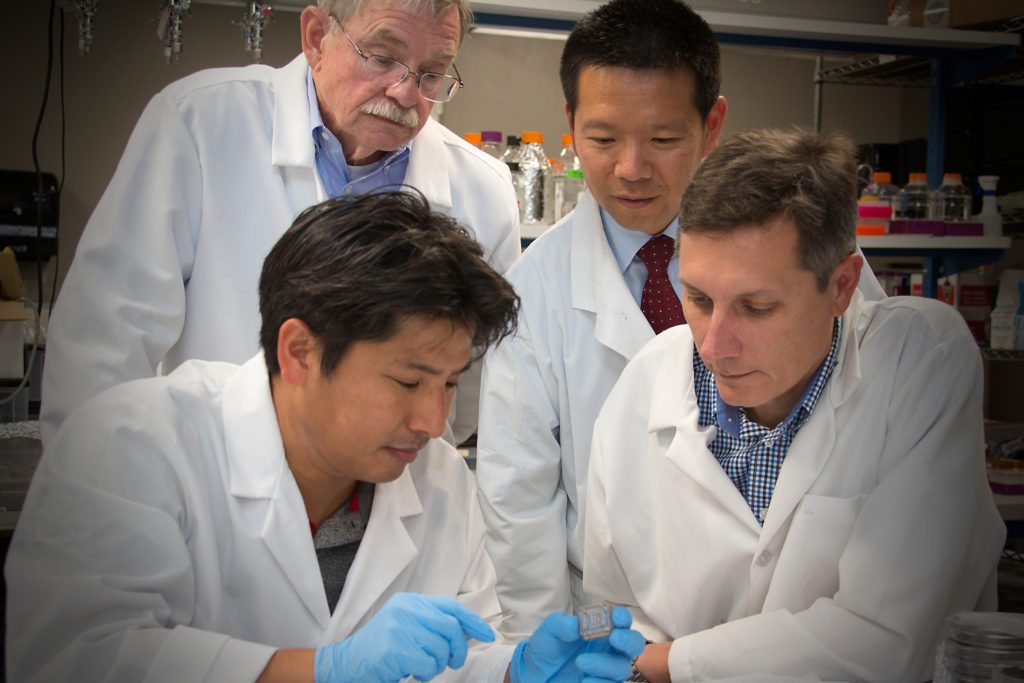A&M leads study of inter-individual differences in chemical toxicity

A team of researchers at the Texas A&M College of Veterinary Medicine & Biomedical Sciences (CVM) and College of Medicine, in collaboration with scientists at North Carolina State University and the University of Minnesota, has been awarded a five-year, multi-million-dollar grant by the National Institutes of Health’s (NIH) National Institute of Environmental Health Sciences (NIEHS).
The $2.7-million project was funded as part of a highly competitive call for proposals to explore population-based models to better understand the linkages between chemicals and their potential adverse health effects in both humans and animals.
Using the chemical butadiene, the team will test the linkages between DNA damage—changes to cells’ chromatin—and genetic differences among individuals. This work will be conducted using novel, experimental tools to study inter-individual variability in a mouse population called “Collaborative Cross” and human cells from more than 100 individuals.
The researchers participating in this project—including collaborator Natalia Tretyakova, a professor of medicinal chemistry at the University of Minnesota—have previously established that butadiene, a chemical used industrially in the production of synthetic rubber and is also present in cigarette smoke, is linked to DNA damage.
“It is well established that exposure to butadiene can result in damage to the genomic code of cells and, thus, has been classified as a known carcinogen in humans and animals,” said Ivan Rusyn, a professor of toxicology in the CVM’s Department of Veterinary Integrative Biosciences (VIBS). “But even though this chemical can damage DNA in all cells, it doesn’t cause cancer in every tissue, as has been shown by studies in animals.
“This means there are additional mechanisms that may be protective or that make certain tissues more susceptible, and we want to understand the factors that make those certain tissues or certain individuals more or less susceptible to the potential adverse effects of butadiene and other chemicals,” he said.
“This project relied on a series of previous studies that showed that if different strains of mice are exposed to the same amount of this chemical, there are very different amounts of DNA damage,” he said.
The study is significant because while the potential for inter-individual variability in the effects of pharmaceuticals on humans are studied through clinical trials, the effects of environmental factors are not investigated for their potential to be more hazardous to certain individuals.
“The reason the NIH is interested in determining which experimental models can be used to study variability in responses to environmental chemicals is that almost all of the testing that is done now is based on rodent strains that are, essentially, identical twins of each other,” said Fred Wright, a statistical geneticist from North Carolina State University and a collaborator on the study. “So, while we do have much data on the safety or hazards of many chemicals in those particular model systems, we make leaps of faith to then generalize to the human population without data on inter-individual variability.”
Translationally, research has generally worked the same way in humans—one population is studied through research such as a clinical trial, but that doesn’t necessarily mean that the results are applicable to all humans around the world.
Ultimately, by exposing human cells from different individuals to butadiene through studies that aim to translate findings from mouse population to humans, the researchers also will be able to better ascertain how their findings can be related to human health.
“The practical application of this project is that we really are trying to understand what, if any, polymorphisms (genetic differences among individuals) actually confer susceptibility or resistance to DNA damage in general,” said David Threadgill, University Distinguished Professor and director of the Texas A&M Institute for Genome Sciences and Society. “If we would understand that, we can, perhaps, enable improvements in testing future chemicals, in understanding what these chemicals can do when individuals have these particular polymorphisms.”
“It’s a very aspirational goal, and may not get there in five years, but it’s both fundamental research and a project that will generate knowledge that is more immediately applicable to the decision-making with respect to chemicals and their hazard in people,” Rusyn said

